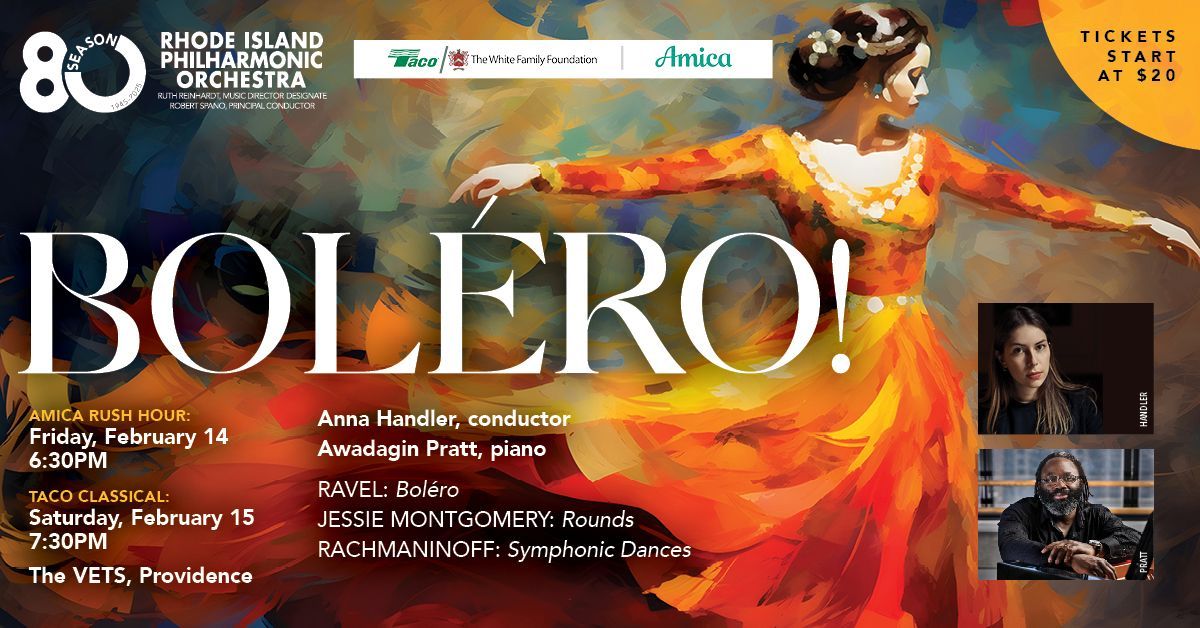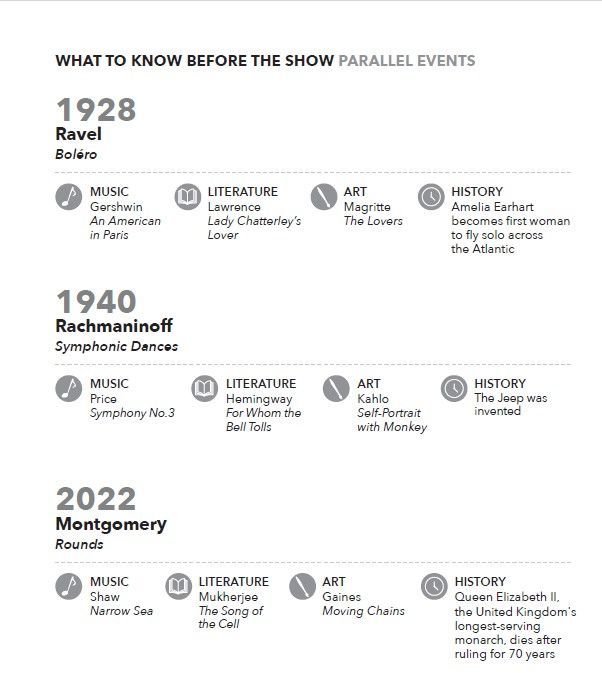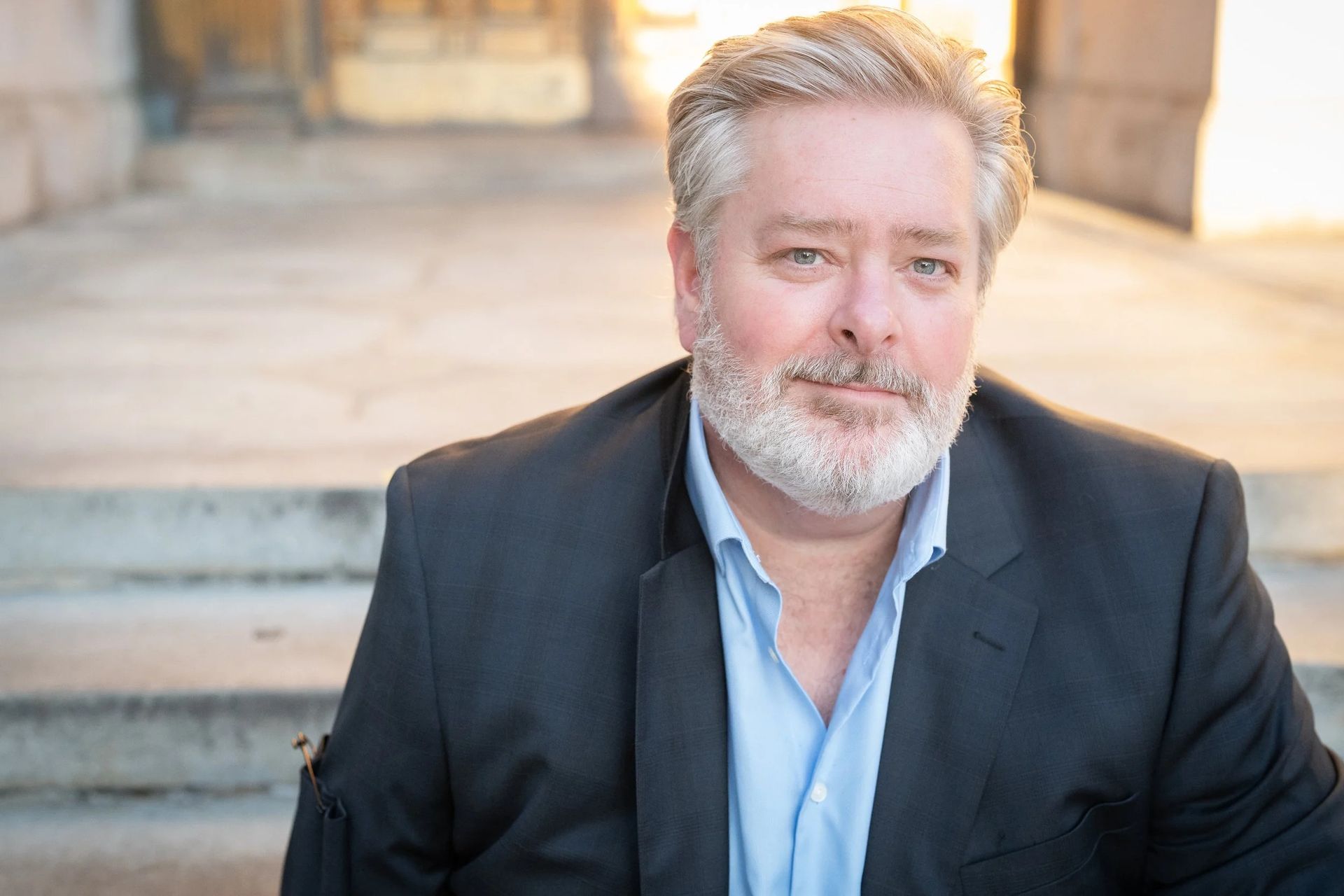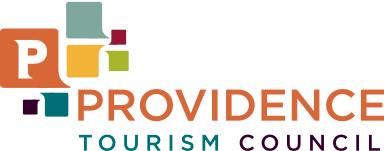THE STORY BEHIND: Jessie Montgomery's "Rounds"
Share
On February 14 & 15, conductor Anna Handler and the Rhode Island Philharmonic Orchestra will present BOLÉRO with pianist Awadagin Pratt.


Experimentation has always been a wellspring of creativity for composers. Great composers are rarely content to fall back on formulas that they've already proven to be successful, opting instead for a new approach or perspective that keeps the creative juices flowing. This is more than evident in the three bold pieces slated for performance this month.
Ravel himself called his Boléro "an experiment . . . consisting wholly of orchestral texture . . . one long, very gradual crescendo." And when the crescendo reaches its breaking point, Ravel makes a huge and unexpected harmonic leap. This immense build up and shock leave us breathless, realizing that we have just experienced what was once a radical challenge to the most basic assumptions of Western concert music.
Rachmaninoff, who had build his reputation on an unparalleled gift for romantic melodies, sly harmonies, saturated colors, and a penchant for the occasional Dies Irae, broke a compositional slump towards the end of his life to give us a decidedly modern treatment of these gifts. His Symphonic Dances, although originally intended for ballet, is today one of the greatest tours de force for orchestra. The result surprised even him. "I don't know how it happened," he remarked. "It must have been my last spark."
Jessie Montgomery is a name well known to Providence music lovers. She devoted her early career to performing and teaching for community organizations here, and any appearance of her music on a local concert stage is a cause for celebration. But this month's performance of Rounds is particularly special, as it was this work that earned her the 2024 Grammy Award for Best Contemporary Classical Composition. Written specifically with this month's soloist, Awadagin Pratt, in mind, the work is an exploration of interconnectedness, using musical gestures to examine how seemingly opposites - such as darkness and light, swiftness and stagnation, tension and release - not only can but must coexist simultaneously.
Title: Rounds
Composer: Jessie Montgomery (1981- )
Last time performed by the Rhode Island Philharmonic: This is a RI Philharmonic Orchestra premiere. In addition to a solo piano, this piece is scored for strings.
The Story: Composer Jessie Montgomery, who spent time earlier in her career performing and teaching in Providence, has emerged over the past few years as one of the most sought-after composers in the world of classical music. She was named Musical America’s Composer of the Year for 2023, and just last year won her first Grammy - for Rounds. Originally commissioned by the Art of the Piano Foundation, Rounds represents her first major composition featuring solo piano. Her partner in crime, so to speak, was tonight’s soloist, Awadagin Pratt. A self-professed lover of poetry and literature, Pratt chose as a starting point for the composition the following five-line excerpt from the T.S. Eliot poem “Burnt Norton,” from his Four Quartets:
"At the still point of the turning world. Neither flesh nor fleshless; Neither from nor towards; at the still point, there the dance is, But neither arrest nor movement. And do not call it fixity,
Where past and future are gathered. Neither movement from nor towards, Neither ascent nor decline. Except for the point, the still point,
There would be no dance, and there is only the dance."
These evocative words, in Pratt’s mind, express “an understanding of a duality that can exist in life,” and, in the process, capture “the manner in which music is heard: its linearity and its potential for entropy in the same moment.”
To translate this concept into musical terms, Montgomery designed a fresh approach to an old form. In the Baroque and Classical periods, the rondo was one of the most popular ways to structure music. A main musical idea comes back again and again, like the chorus of a song, with contrasting material providing intervening episodes. Montgomery describes Rounds as “a rondo within a rondo within a rondo” in five major sections. One of the sections is an improvisational cadenza, allowing the pianist to take the main idea and follow it wherever his or her own muse happens to take it that evening. Others focus on intriguing ideas like “flying in circles patterns,” “playing with opposites,” and “fractals.”
Program Notes by Jamie Allen © 2024 ALL RIGHTS RESERVED
Tickets start at $20! Click HERE or call 401-248-7000 to purchase today!







